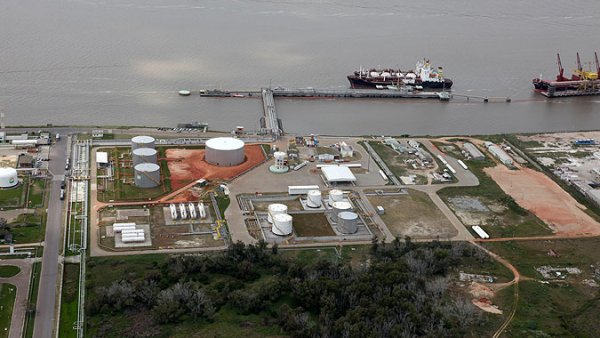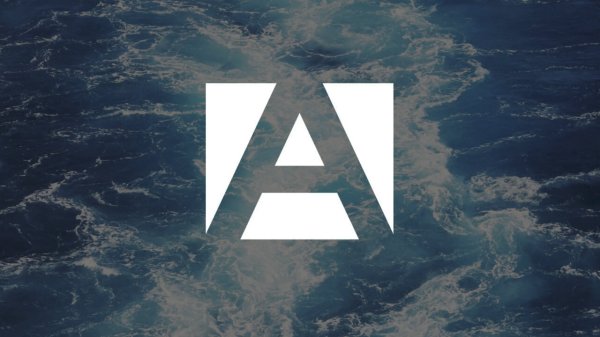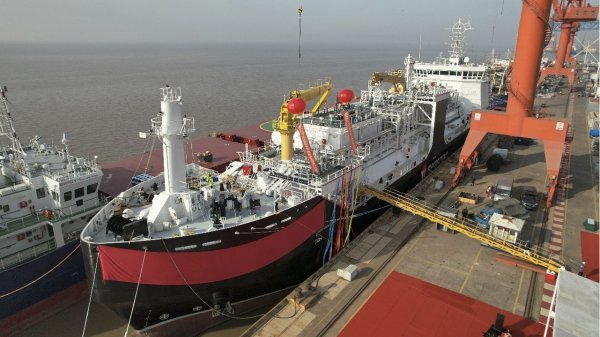New tool developed to investigate marine emissions
Researchers use identification system to model ship emissions in the Baltic Sea.
A new tool used to investigate exhaust emissions of marine vessels has been developed and applied to shipping in the Baltic Sea.
The Baltic Sea is a busy maritime region with 3500-5000 ships operating in the area every month. Emissions from shipping contribute significantly to atmospheric pollution.
In May 2006, the Baltic Sea was the first area designated a 'SOx (sulphur oxides) Emission Control Area' (SECA). In October 2008, revised regulations to reduce harmful pollution from ships were adopted by the International Maritime Organisation (IMO), including proposals to set regional nitrogen oxides limits and a change to almost sulphur-free marine fuels by 2020.
The new modelling system is outlined in a document entitled "A modelling system for the exhaust emissions of marine traffic and its application in the Baltic Sea area" by Finnish researchers J.P. Jalkanen, A. Brink, J. Kalli, H. Pettersson, J. Kukkonen, and T. Stipa.
The researchers modelled ship emissions (sulphur oxides, nitrogen oxides and carbon dioxide) in the Baltic Sea using Automatic Identification System (AIS) data as a starting point. AIS is a navigational aid used to identify and track ships to reduce the risk of collision, and is required by the IMO on larger ships. The AIS messages enable ship positions and speeds to be more accurately monitored, by updating the location of ships at 1 second intervals.
Technical information, including any emission abatement techniques, on more than 20,000 ships is stored in the model's database. Using the speed and technical data of the ship, the use of the main and auxiliary engines is calculated, from which the fuel consumption and exhaust emissions for the ship is estimated. The effect of waves on the fuel consumption of ships can also be calculated.
Taking the year 2007 as an example, the study estimated that:
* 400 kilotons (kt) of nitrogen oxides, 138 kt of sulphur dioxide and 19 megatons of carbon dioxide were emitted in the Baltic Sea area.
* shipping fuel consumption was 6205 kt, which corresponds to 265 PJ (petajoules, i.e. 1015 joules) of energy consumed.
* the greatest number of ships is observed in summer due to increased passenger traffic: there were 3700 ships in February compared with around 4500 ships during June, July and August.
* new ships (built after 1 January 2000) contributed 39 and 43 per cent, respectively, to annual nitrogen oxides and sulphur oxides emissions. (Modern ships tend to be larger than older ships).
* over 25 per cent of total emissions of nitrogen oxides, sulphur oxides and carbon dioxide originated from 'roll-on-roll-off' passenger ships (RoPax) ships, despite these ships accounting for only 5 per cent of ship types travelling in the Baltic Sea.
* container ships emitted 8 per cent of total emissions, despite accounting for just 4 per cent of all ship types.
* half of nitrogen oxide emissions came from ships registered in countries which surround the Baltic Sea, about one third from ships registered outside the EU and the remainder from ships from other EU countries.
The model can be used to evaluate the effects of emission abatement policies, such as emission-based charges in shipping lanes, or the health effects of regional or long-range atmospheric transport of pollutants. In addition, provided that the relevant AIS information is available, the model can be used to estimate shipping emissions in any sea area of the world.
The 18-page study can be found at the following address:
http://www.atmos-chem-phys-discuss.net/9/15339/2009/acpd-9-15339-2009-print.pdf
The Baltic Sea is a busy maritime region with 3500-5000 ships operating in the area every month. Emissions from shipping contribute significantly to atmospheric pollution.
In May 2006, the Baltic Sea was the first area designated a 'SOx (sulphur oxides) Emission Control Area' (SECA). In October 2008, revised regulations to reduce harmful pollution from ships were adopted by the International Maritime Organisation (IMO), including proposals to set regional nitrogen oxides limits and a change to almost sulphur-free marine fuels by 2020.
The new modelling system is outlined in a document entitled "A modelling system for the exhaust emissions of marine traffic and its application in the Baltic Sea area" by Finnish researchers J.P. Jalkanen, A. Brink, J. Kalli, H. Pettersson, J. Kukkonen, and T. Stipa.
The researchers modelled ship emissions (sulphur oxides, nitrogen oxides and carbon dioxide) in the Baltic Sea using Automatic Identification System (AIS) data as a starting point. AIS is a navigational aid used to identify and track ships to reduce the risk of collision, and is required by the IMO on larger ships. The AIS messages enable ship positions and speeds to be more accurately monitored, by updating the location of ships at 1 second intervals.
Technical information, including any emission abatement techniques, on more than 20,000 ships is stored in the model's database. Using the speed and technical data of the ship, the use of the main and auxiliary engines is calculated, from which the fuel consumption and exhaust emissions for the ship is estimated. The effect of waves on the fuel consumption of ships can also be calculated.
Taking the year 2007 as an example, the study estimated that:
* 400 kilotons (kt) of nitrogen oxides, 138 kt of sulphur dioxide and 19 megatons of carbon dioxide were emitted in the Baltic Sea area.
* shipping fuel consumption was 6205 kt, which corresponds to 265 PJ (petajoules, i.e. 1015 joules) of energy consumed.
* the greatest number of ships is observed in summer due to increased passenger traffic: there were 3700 ships in February compared with around 4500 ships during June, July and August.
* new ships (built after 1 January 2000) contributed 39 and 43 per cent, respectively, to annual nitrogen oxides and sulphur oxides emissions. (Modern ships tend to be larger than older ships).
* over 25 per cent of total emissions of nitrogen oxides, sulphur oxides and carbon dioxide originated from 'roll-on-roll-off' passenger ships (RoPax) ships, despite these ships accounting for only 5 per cent of ship types travelling in the Baltic Sea.
* container ships emitted 8 per cent of total emissions, despite accounting for just 4 per cent of all ship types.
* half of nitrogen oxide emissions came from ships registered in countries which surround the Baltic Sea, about one third from ships registered outside the EU and the remainder from ships from other EU countries.
The model can be used to evaluate the effects of emission abatement policies, such as emission-based charges in shipping lanes, or the health effects of regional or long-range atmospheric transport of pollutants. In addition, provided that the relevant AIS information is available, the model can be used to estimate shipping emissions in any sea area of the world.
The 18-page study can be found at the following address:
http://www.atmos-chem-phys-discuss.net/9/15339/2009/acpd-9-15339-2009-print.pdf

|
IMO approves pricing mechanism based on GHG intensity thresholds
Charges to be levied on ships that do not meet yearly GHG fuel intensity reduction targets. |
|
|
|
||

|
VARO Energy expands renewable portfolio with Preem acquisition
All-cash transaction expected to complete in the latter half of 2025. |
|
|
|
||

|
NYK trials biofuel in milestone coal carrier test
Vessel is used to test biofuel for domestic utility company. |
|
|
|
||

|
H-Line Shipping orders LNG bunkering vessel
Vessel with 18,000-cbm capacity to run on both LNG and MDO. |
|
|
|
||

|
How to engineer and manage green shipping fuels | Stanley George, VPS
Effective management strategies and insights for evolving fuel use. |
|
|
|
||

|
Swedish government bans scrubber wastewater discharges
Discharges from open-loop scrubbers to be prohibited in Swedish waters from July 2025. |
|
|
|
||

|
MAN Energy Solutions achieves 100% load milestone for ammonia engine
Latest tests validate fuel injection system throughout the entire load curve. |
|
|
|
||

|
Petrobras secures ISCC EU RED certification for B24 biofuel blend at Rio Grande
Blend consisting of 24% FAME is said to have been rigorously tested to meet international standards. |
|
|
|
||

|
Stolt-Nielsen to fully control Avenir LNG with acquisition
Share purchase agreement to buy all shares from Golar LNG and Aequitas. |
|
|
|
||

|
Bureau Veritas supports launch of CIMC SOE's LNG bunkering vessel
Handover of Seaspan Energy's cutting-edge 7,600-cbm vessel completed. |
|
|
|
||
Related Links
- · Shipping could cut emissions by 30% at zero cost, says study [Insights]
- · More research needed to cut ship emissions, says CEO [Insights]
- · Marine fuel emissions data released [Insights]

